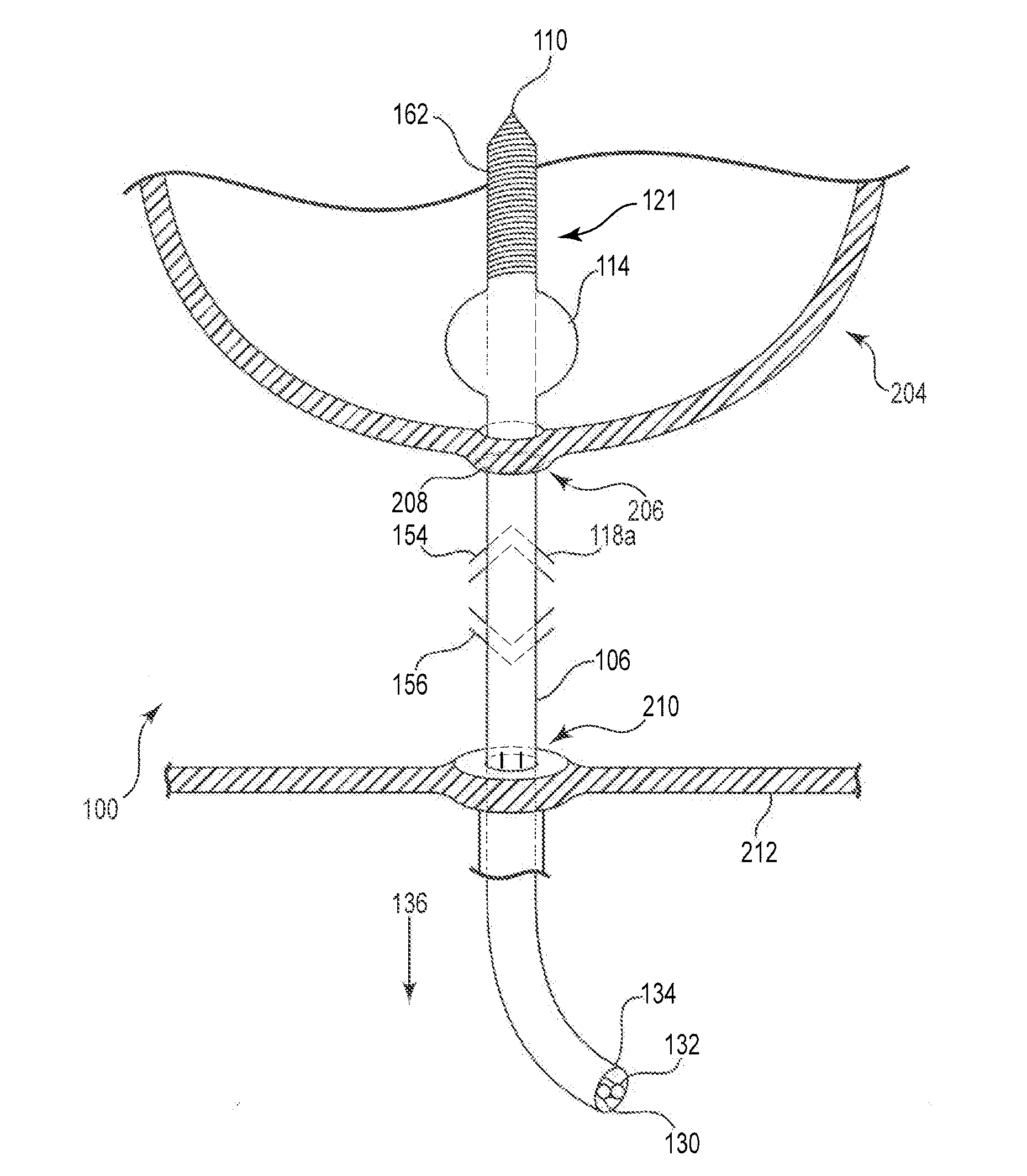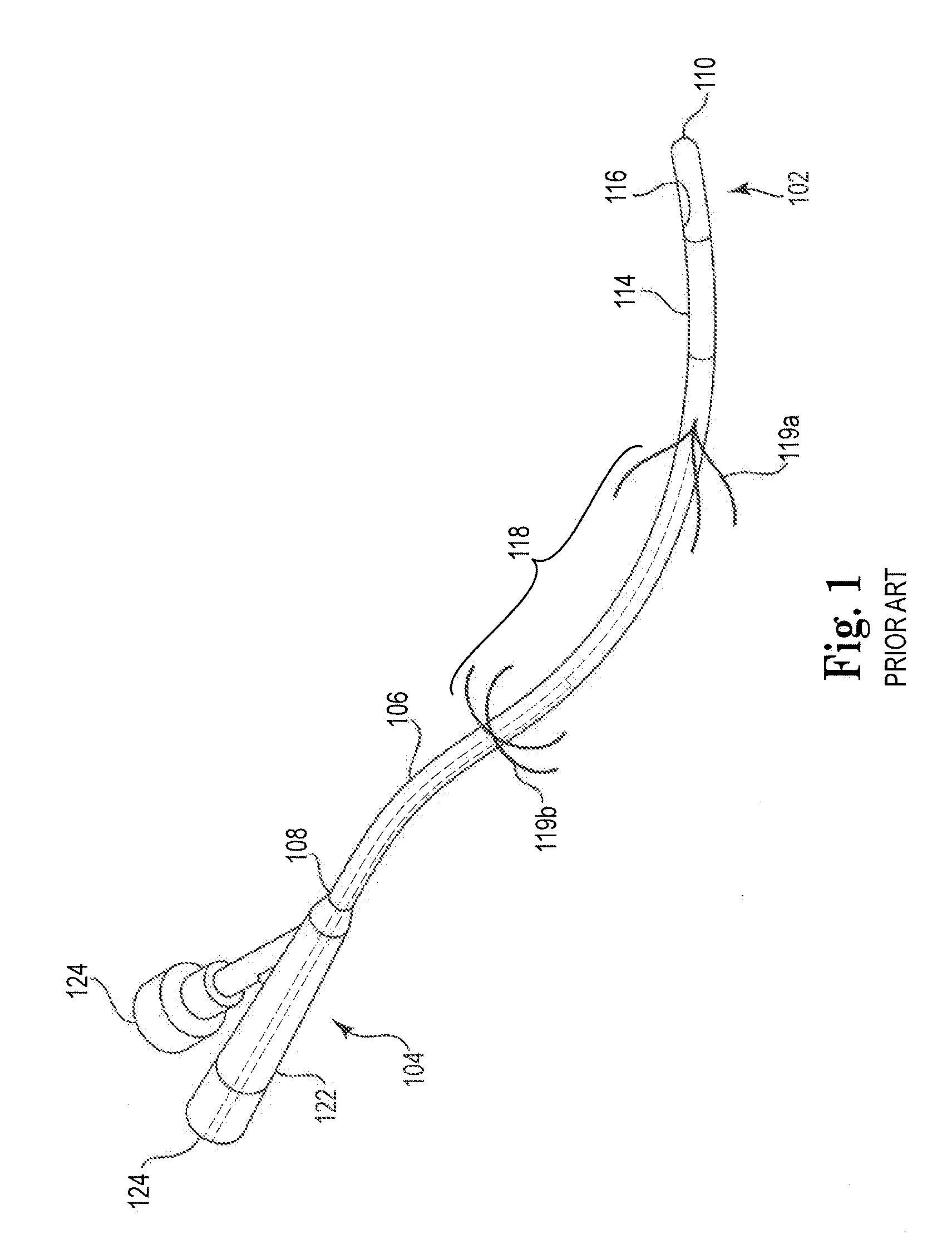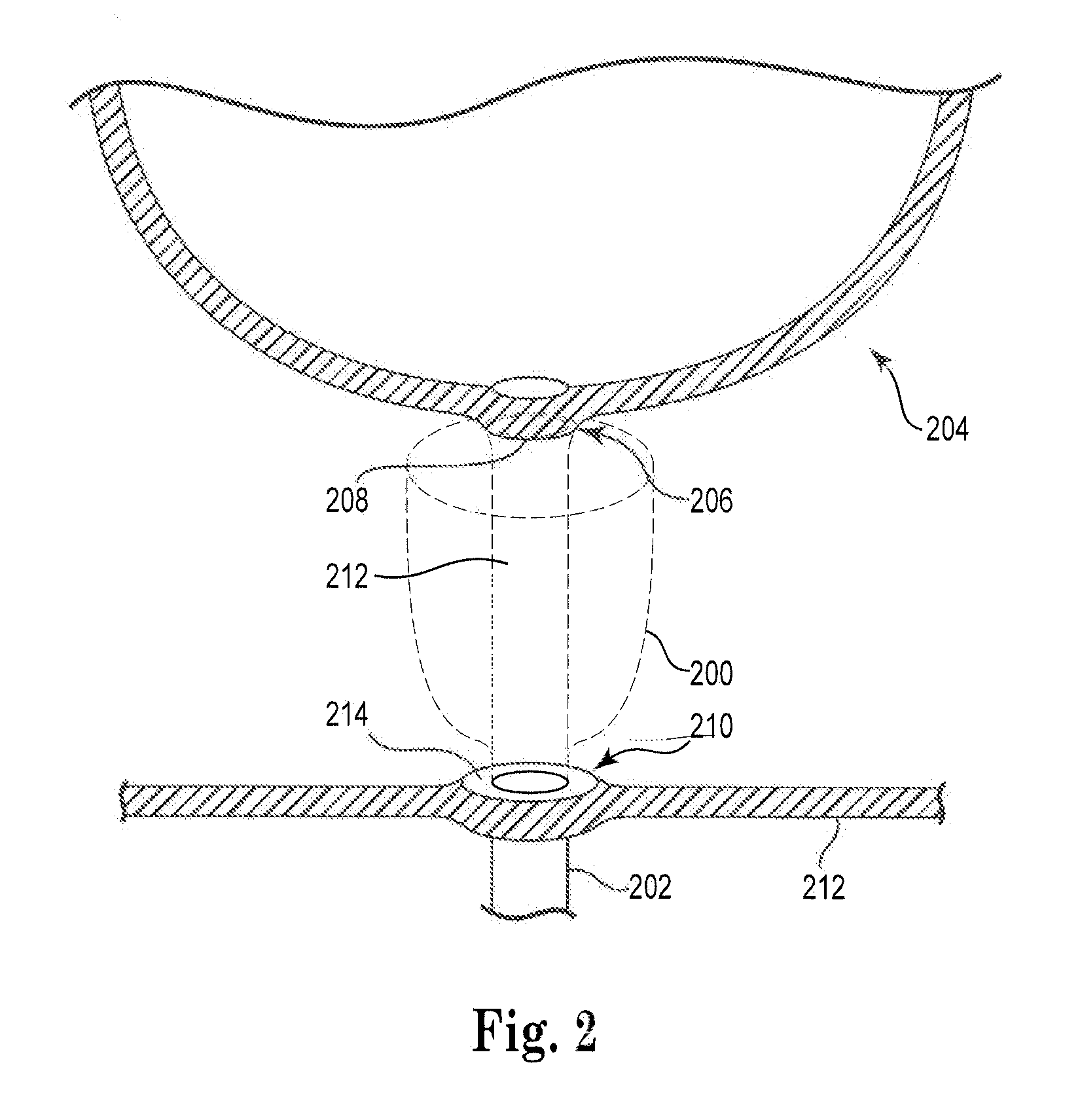[0007]In one representative aspect of the present invention, a
urinary catheter can include features and structures that function to drain the bladder, e.g., through a drainage lumen extending the length of the catheter body. In the case of the urinary
catheter device comprising an anastomosis device, the drainage function can be performed simultaneously and in conjunction with a tissue approximating structure that retains and approximates severed tissue during a healing period. Representative methods of the present invention can use such an anastomosis device, including both a draining function and a tissue approximating function, to accomplish healing of the anastomosis, without sutures, and draining of the bladder, with the single anastomosis device and preferably without removing or replacing the device during or after the procedure until healing is complete. The anastomosis device can be installed during or after a radical
prostate removal procedure, and can remain installed with the bladder-draining function and the tissue-approximating function in effect until the anastomosis is completely healed and the severed tissue, e.g., bladder and
urethra, are re-connected. Thus, an
advantage associated with inventive methods and devices can be that the anastomosis device performs dual functions when installed during and following an anastomosis procedure, of draining the bladder and functioning as a tissue approximating structure, at the same time.
[0008]Also advantageously, inventive methods and devices avoid the need to use sutures to connect severed tissue such as a bladder neck and urethral stump. The ability to avoid sutures provides very significant advantages of avoiding the potential for damage to surrounding tissues and nerves that can be caused by installation of sutures using a needle. Such damage can include, for example, damage to ureters at the bladder or damage to the
sphincter or nerves located in the perineal floor. Damage to any of these tissues has the potential to cause incontinence or impotency. Additionally, installing sutures is a difficult and technique-sensitive process that must be performed in a
confined space and that would be avoided if possible based on other alternatives. Thus, the invention offers the very significant
advantage of eliminating the need to use sutures to re-attach severed tissues, and the attendant potential damage to those sensitive proximal tissues and nerves and the possibility of incontinence or impotency.
[0010]In one aspect of the present invention, a urinary catheter can comprise a catheter body having a proximal manipulation end, a distal treatment end and a drainage lumen that extends continuously between the proximal manipulation end and the distal treatment end. The urinary catheter can further comprise a clot prevention component mounted over the distal treatment end, such that the clot prevention component defines a plurality of entry points by which fluid can enter the drainage lumen. In one embodiment, the clot prevention component can comprise a flexible spring having a spring body defined by adjacent wound coils. The plurality of entry points can be continually defines between the adjacent wound coils. In some embodiments, the plurality of entry points can serve to filter and prevent large clots within the fluid from entering the drainage lumen. In some embodiments, flexing of the flexible spring can serve to break up these large clots into smaller sizes that are capable of being flushed from the drainage lumen without plugging or otherwise preventing fluid flow through the drainage lumen. In some embodiments, flexing of the flexible spring can be accomplished through movement of a patient or alternatively, a displacement device can be slidably advanced through the drainage lumen such that the displacement device physically contacts the spring body and mechanically forces the spring body to flex. In some embodiments,
patient comfort can be improved by selectively winding the adjacent wound coils to vary a
pitch of the spring body. The urinary catheter can further include tissue approximation structure so as to comprise an anastomosis device suited for use in a radical prostatectomy procedure.
[0015]Still other embodiments can include one or more catheters configured to prevent the formation of blood clots and, thereby, improving the flow of
urine out of the catheter. The catheter can include a spring device
proximate the distal tip and catheter
balloon. As a result, fluid flow through the catheter tip is improved by allowing for flow through the spaces between the adjacent coils of the spring device. Flexing of the spring during normal patient movement can also serve to break up clots (e.g., pinching of clots between adjacent coils). If the tip should become clogged, a stylet or other device can be inserted to stretch or displace the spring device or spring coils.
[0016]Further, the spring tip device can act as a filter which prevents large clots from entering the drainage lumen of the catheter.
Patient comfort and fluid drainage can be enhanced by varying the flexibility of the spring along the length of the spring tip device. This can be accomplished by varying the
pitch or other attributes of the spring device along its respective length.
 Login to View More
Login to View More  Login to View More
Login to View More 









